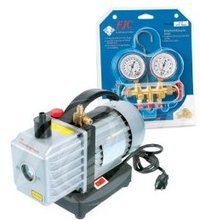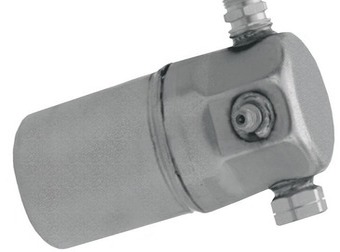Tips for Charging Car AC

When charging car AC systems it’s recommended that a low system be evacuated and then recharged to factory specifications. Often people will just add Freon if they think it’s low and this can create a few problems.
The amount of Freon charge in the system is one of the most important factors in the performance of your air conditioning. If you add a little to much it can knock a few degree’s off the out put temperature.
If you add way to much it can damage the compressor. The under hood label will give exact specifications of how much Freon belongs in the system right down to the ounce.
When the system is low the compressor will most likely cycle on and off, because of a pressure imbalance. When the ac is overcharged the pressure on the low side will start to creep up or become higher and in return cause poor cooling in the interior compartment.
Evacuating and Charging Car Air
Now a days with strict EPA laws we really call this process recovery and charge, because we don’t let any refrigerant escape into the atmosphere. Evacuating is a term used to describe the complete removal of all Freon.
This is done by creating a vacuum in the system by connecting a vacuum pump. This process gives you a fresh start and it also pulls all air and moisture out before recharging.
This is a very important factor in the overall performance of any car air conditioner. Air or moisture that is left inside the system reduces the efficiency and can eventually lead to major problems such as compressor failure.
Air causes excessive pressure and can restrict the refrigerants ability to change its state from a gas to liquid. Moisture on the other hand can freeze up and restrict the refrigerants flow. Moisture also forms an acid when mixed with refrigerant which can intern cause corrosion inside your car AC system.
A vacuum pump removes this air and moisture from all internal components. It also provides a clean slate for charging car AC. Refilling the system known as charging is when Refrigerant is added through the systems service ports.

Charging through the low side service port is the recommended procedure on most vehicles unless an electronic charging station is used.
However, for most do-it-yourself mechanics adding Freon from a can through a manifold gauge set is the most common method. In this case you want to locate the low side service fitting and charge from there.
Often these are located on the accumulator. Always refer to a car repair manual for the correct procedure for your car. The steps are clearly outlined and this is the easiest way to get the most cooling out of an air conditioning system.
Adding Oil to the AC System
In most cases the only time you will add an oil charge is if a component is replaced in the system.
Specifically a compressor or receiver dryer or sometimes called an accumulator, will hold a fair amount of refrigerant oil. If the system has become low due to a small leak then chances are most of the refrigerant oil is still in the system.
The oil in the system which is dispersed through the Freon and lubricates the internal components as the Freon circulates is another critical factor in the overall cooling abilities. Too little oil and internal damage can result. Too much oil and the Freon lose its ability to properly cool.
Generally compressor oil level is checked only when there is evidence of a major loss. An example would be a broken hose that empties the system quickly.
Another example would be collision damage to the front of the car. The AC condenser can rupture and cause escape of refrigerant oil as well.
When replacing refrigerant oil it is important to use the specific type and quantity of AC oil recommended by the compressor manufacturer.
This is a huge detail in the conversion from R12 to R134A refrigerant. Old R-12 systems use mineral oil. The newer R-134a type car air conditioning systems use synthetic oil known as PAG oil. Installing the wrong lubricant can lead to internal damage of critical air-conditioning components. Before you move on, give this A/C page a bookmark or share with a friend having car problems.
For more information on specific problems and procedures my start page for the car ac section is available from the next link. Understanding how AC works can help you fix ac problems. There is also more information about charging car ac.
There are several makes and models that are experiencing issues with the interior air speed, volume or direction of flow. Visit this blower motor problems page to see some common solutions to these type of problems.
Find out what else is covered on this automotive information website. Also get some more answers to auto repair questions.

